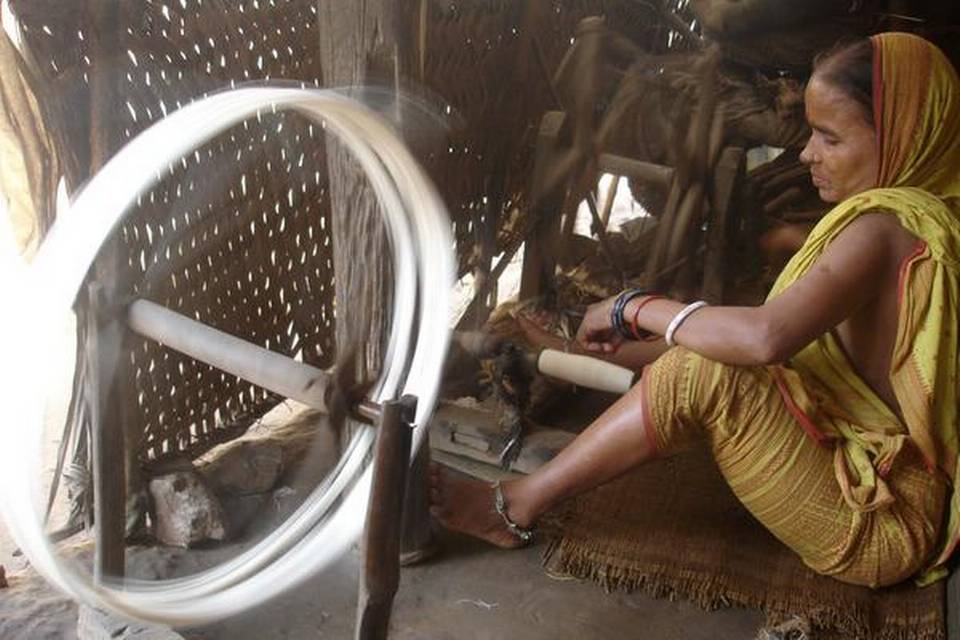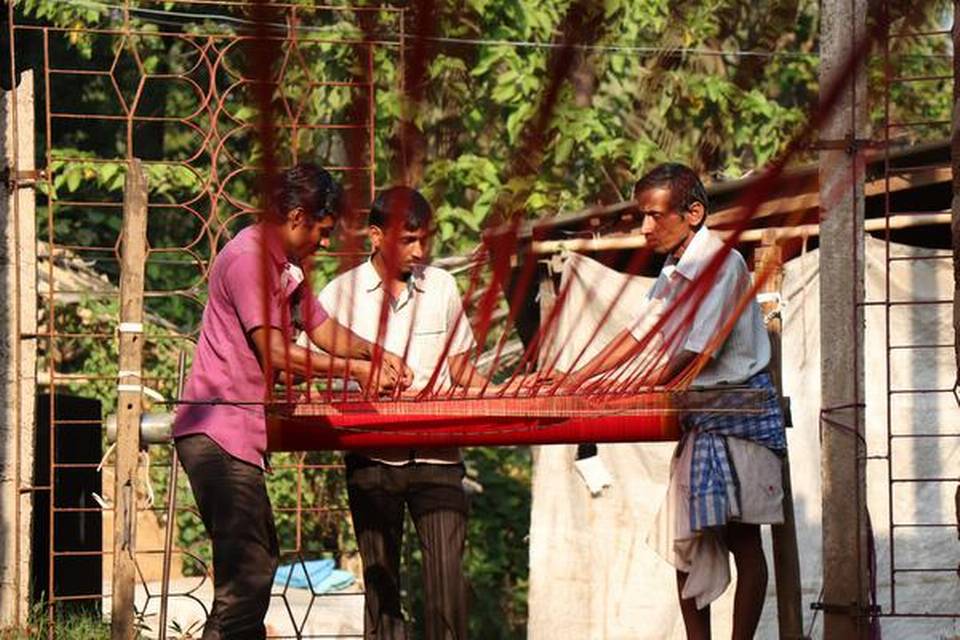
Category: FABRICS
Country: India
Textile artist Pankaja Sethi celebrates the handspun tradition of Odisha fabrics in her latest creations at the Odisha Textile Festival
By Priyadershini S.KOCHI, JANUARY 19, 2022 17:13 IST | UPDATED: JANUARY 20, 2022 23:22 IST
“‘The eye wards off evil; the triangle is the house of the Goddess….’ The women explain and I record their voices, which I translate into patterns, it is like a narrative textile,” explains Pankaja Sethi about her work in indigenous handloom with the Adivasis of Odisha. The Bhubaneshwar-based textile designer, artist and anthropologist is talking about her latest collection at the Odisha Textile Festival, on at Parthas in Kochi.

An initiative of Gallery OED, the saris, stoles and tunics are a tribute to the weavers of Odisha who carry forward their folk culture through weaving dyeing and embroidery.
Pankaja has been working with Adivasi women and weavers of Odisha over 14 years. She studied textile designing at National Institute of Fashion Technology, New Delhi and did her Master’s in Social Anthropology from the School of Oriental and African Studies, University of London.
Pankaja works with about 30 families in clusters across Gopalpur, Jagatsinpur, Nuapatna, Ganjam and Kotpad.
“I train them and conduct workshops. The weavers are used to a certain way of working. I contemporize the designs, but I am particular about collaborating. It is never a top-down model.”
She encourages a conversation around a motif and creates patterns from that. “My saris and textiles are more of stories, a conversation from which both learn. It is a two-way process.”
The handspun Tussars of Gopalpur are made by placing the threads on the thigh and twisted by hand. “This method is specific to Gopalpur,” says Pankaja adding that she is conscious of the texture of handspun and does not believe in mass production.
The famed Ikats of Nuapatna in the collection are tie-and-dye saris. The Gantha saris with fabric patches and running stitch is inspired from the quilting tradition of Southern Orissa. “Old saris were used to make quilts. I have translated the idea on saris,” says Pankaja pointing out that the Japanese have a similar technique called Boro. Fish, conch and birds are recurring motifs.
She also taught weavers the Japanese art of Shibori.A part of the collection highlights the famous temple textile-applique or Chandua, done in muted colours instead of the traditional bright shades they were originally made in. Motifs such as dragonflies and fishes are a simplistic interpretation of traditional technique.
Prêt line
A modern, prêt line of cream and deep maroon tunics, done by the Panika women of Kotpad are made using a dye formed from root of the bark of the Aal tree (Morinda Citrifolia) to which cow dung and castor oil are added. The colour takes almost 30 days to form, says Pankaja.

While she was researching the material culture of the Dongria Kondh community of Nyamgiri hills, and “trying to understand their patterns and symbolism” Pankaja realised that there was a language beyond design, which she needed to understand. “I then created my own ethnography,” she says and enrolled for a Master’s degree in social anthropology.
Pankaja has received many fellowships and has worked on subjects such as ‘Kerang-The Bark cloth of Gadaba Adivasi women’, ‘Kotpad Adivasi Natural dye Textiles ‘(2009-10), ‘Ganth ra Katha- The Quilting tradition of Ganjam’(2015-16), ‘The Bark Cloth of Mahima Dharma ( 2017-18)’, and on Dongria Kondh Textiles 2012-13.
Talking about the condition of the weavers and the continuity of the craft, Pankaja says, “There are real challenges in both these spheres. The next generation does not want to learn these techniques and the seniors do not want the next generation to remain limited to the loom. Many villagers have gained employment elsewhere.”
“There is, however, good news too. Social media has helped independent weavers to participate in craft fairs. They have understood how contemporary designs can change their business, but also that preservation of tradtion is important. Many have been feted by the organizations and that is a big boost for them,” says Pankaja who recommends good weavers for awards and recognition. She also believes that the handmade is the future.
Her collection is a contemporary interpretation of age-old culture of Odisha communities. “I have kept it simple.”
The saris and tunics range from ₹ 4000 to ₹ 28,000 and the show runs till February 17.
Courtesy: https://www.thehindu.com/life-and-style/fashion/pankaja-sethi-odisha-textile-festival-2022-kochi/article38292079.ece
Copyrights © 2025 GLOBAL TEXTILE SOURCE. All rights reserved.